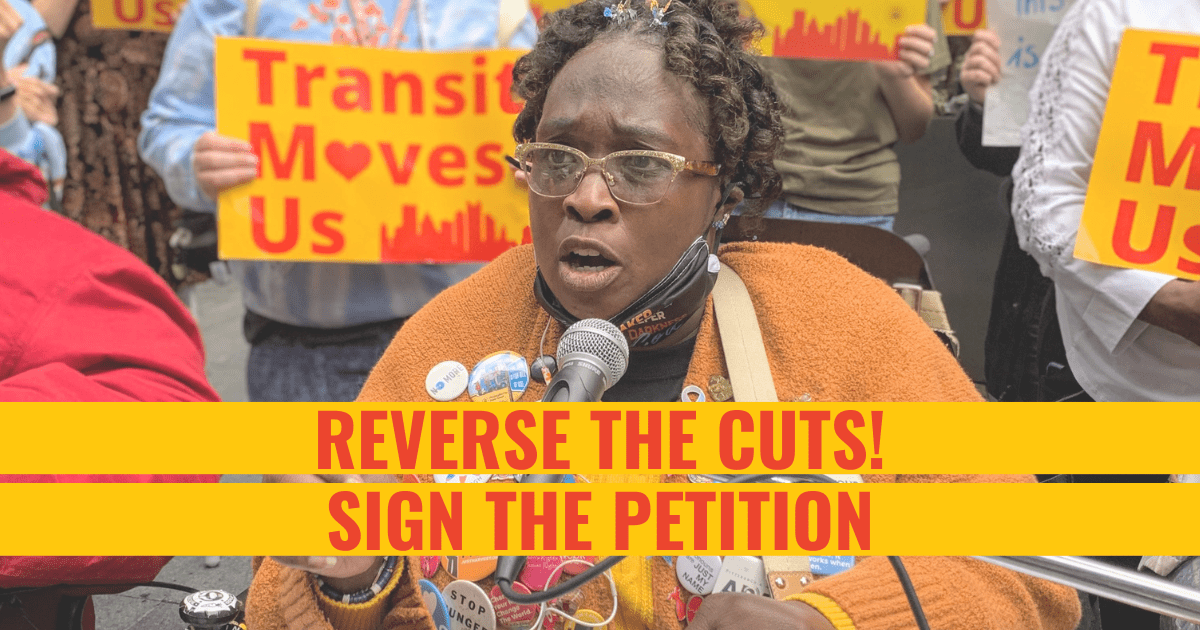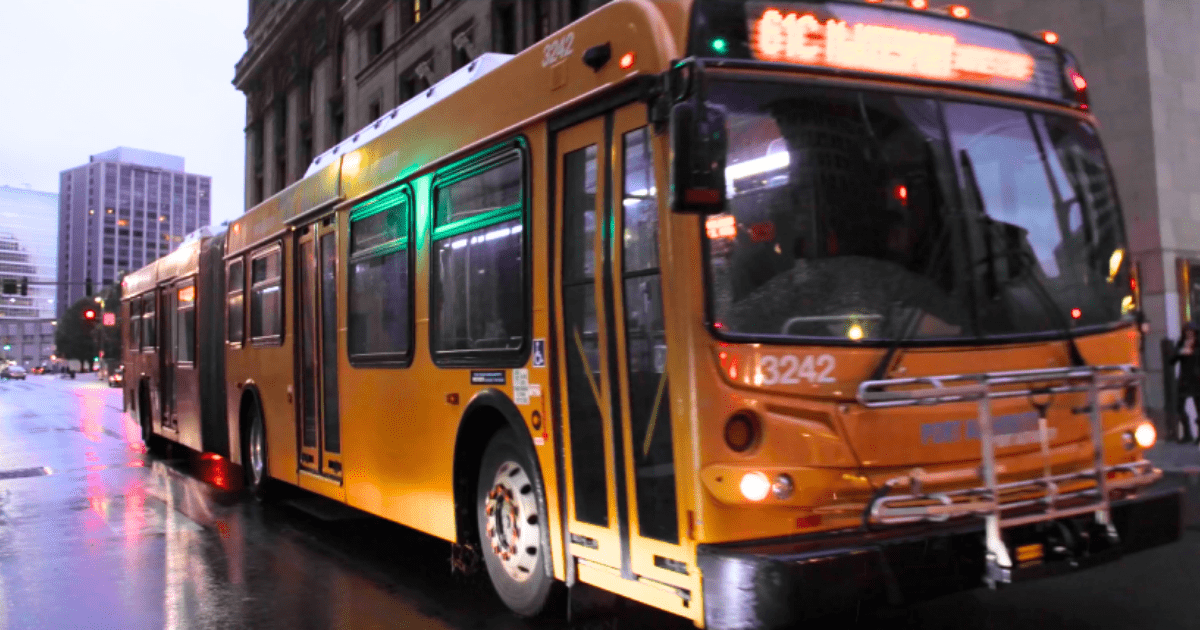 Image is a cartoon with a little banner on the top left that reads, “Join PPT to brainstorm…” Beneath that is a sparkly speech bubble the reads “The Future of Transit Justice, Wednesday, 10/11 7pm at 1 Smithfield St.” The speech bubble is...
Image is a cartoon with a little banner on the top left that reads, “Join PPT to brainstorm…” Beneath that is a sparkly speech bubble the reads “The Future of Transit Justice, Wednesday, 10/11 7pm at 1 Smithfield St.” The speech bubble is...
 image description: petition flyer has an image of PPT Member Lorita Gillespie speaking at the September 29th rally to reverse the cuts. Text says “Reverse the Cuts! Sign the petition. Share your story. Major transit changes were implemented October 1st to the...
image description: petition flyer has an image of PPT Member Lorita Gillespie speaking at the September 29th rally to reverse the cuts. Text says “Reverse the Cuts! Sign the petition. Share your story. Major transit changes were implemented October 1st to the...
 image description: photo of a yellow articulated PRT bus in downtown PGH. Big changes are slated to start October 1st. Learn more in the blog and sign up to make your voice heard. Throughout the year, PRT makes a number of “service adjustments” to routes throughout...
image description: photo of a yellow articulated PRT bus in downtown PGH. Big changes are slated to start October 1st. Learn more in the blog and sign up to make your voice heard. Throughout the year, PRT makes a number of “service adjustments” to routes throughout...
 image description: flyer for the rally on September 29th with a photo of PPT Member Debra Green at a successful PPT rally to stop cuts to the 61C and text reads: Rally and Testify! We want changes to the 61D, 71A,C,D, that build better access, not shortened access and...
image description: flyer for the rally on September 29th with a photo of PPT Member Debra Green at a successful PPT rally to stop cuts to the 61C and text reads: Rally and Testify! We want changes to the 61D, 71A,C,D, that build better access, not shortened access and...
 I’m a student, a freelance interpreter who travels around the city, and also a carer for my grandmother. I rely heavily on the ability to get downtown, and these line changes are cutting my transportation options in half. CJ’s question at PRT’s...
I’m a student, a freelance interpreter who travels around the city, and also a carer for my grandmother. I rely heavily on the ability to get downtown, and these line changes are cutting my transportation options in half. CJ’s question at PRT’s...





